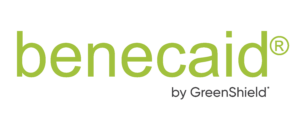The industry average increase of group benefit plans are expected to be at least 8% in the coming year, according to a recent prediction by Aon Hewitt. Therefore, a focus on cost containment strategies will be of prime importance for both advisors and clients in 2017.
An ASO plan is a great option for cost conscious clients looking to gain more control. An ASO based health benefits plan allows employers to pay for predictable, routine expenses and purchase Stop Loss insurance to protect against catastrophic events like a major illness. The ASO model is similar to auto insurance, where individuals are responsible for expenses up to their chosen deductible and once the deductible level has been reached, insurance takes over. With ASO insurance, the deductible is called Stop Loss insurance.
Underwriters look at a group’s claims and determine how much of those claims would fall under the Stop Loss level and how much would go over the Stop Loss level. For the amounts below the Stop Loss level, the employer pays a monthly budgeted deposit to the insurance company to cover the expected claims. Along with the monthly budgeted deposit, the employer also pays a premium for Stop Loss insurance that will cover any catastrophic claims. The foundation of the ASO model is that a group is only purchasing insurance for truly unpredictable, potentially high cost claims and not purchasing insurance for predictable, expected claims like dental cleanings, maintenance medications, optometrist visits etc.
If claims above the Stop Loss level increase from one year to the next, the group can expect to see an increase in the monthly price of their Stop Loss insurance. However, since Stop Loss insurance is only a small component of the monthly cost, the increase does not have the same effect as an overall premium increase with a fully insured model. Similarly, if the routine predictable expenses below the Stop Loss level were to increase, the group’s monthly budgeted deposit would increase as well. Either way, the increase is only applied to the part of the plan that is affected and not added to the overall cost of the plan.
Let’s look at an example below, comparing the two models using the exact same claims and demographic data. If EHC claims were to increase by 16% and dental claims were to increase by 6%, how does that affect the renewal rates under each model? The same claims experience drove a 12% overall increase under the ASO model compared to a 19% increase in the overall cost under the fully insured model.

This theory is not only proven through the example above but continues to show throughout our annual plan renewals. In 2016, over half of our clients (52%) experienced a reduction in their plan cost or an increase of less than 2% vs. Aon Hewitt’s projected 8% year over year increase.
Here are some specific highlights from Benecaid’s 2016 group renewals:
- 16% of our renewing clients saw a reduction in their rates
- 36% of our clients saw either no change or an increase of less than 2%

To find out more about Benecaid’s sustainable ASO health benefits plan and how we can help your clients save money year after year, contact your Benecaid Benefits Consultant or email us at advisors@benecaid.com.



Comments are closed.